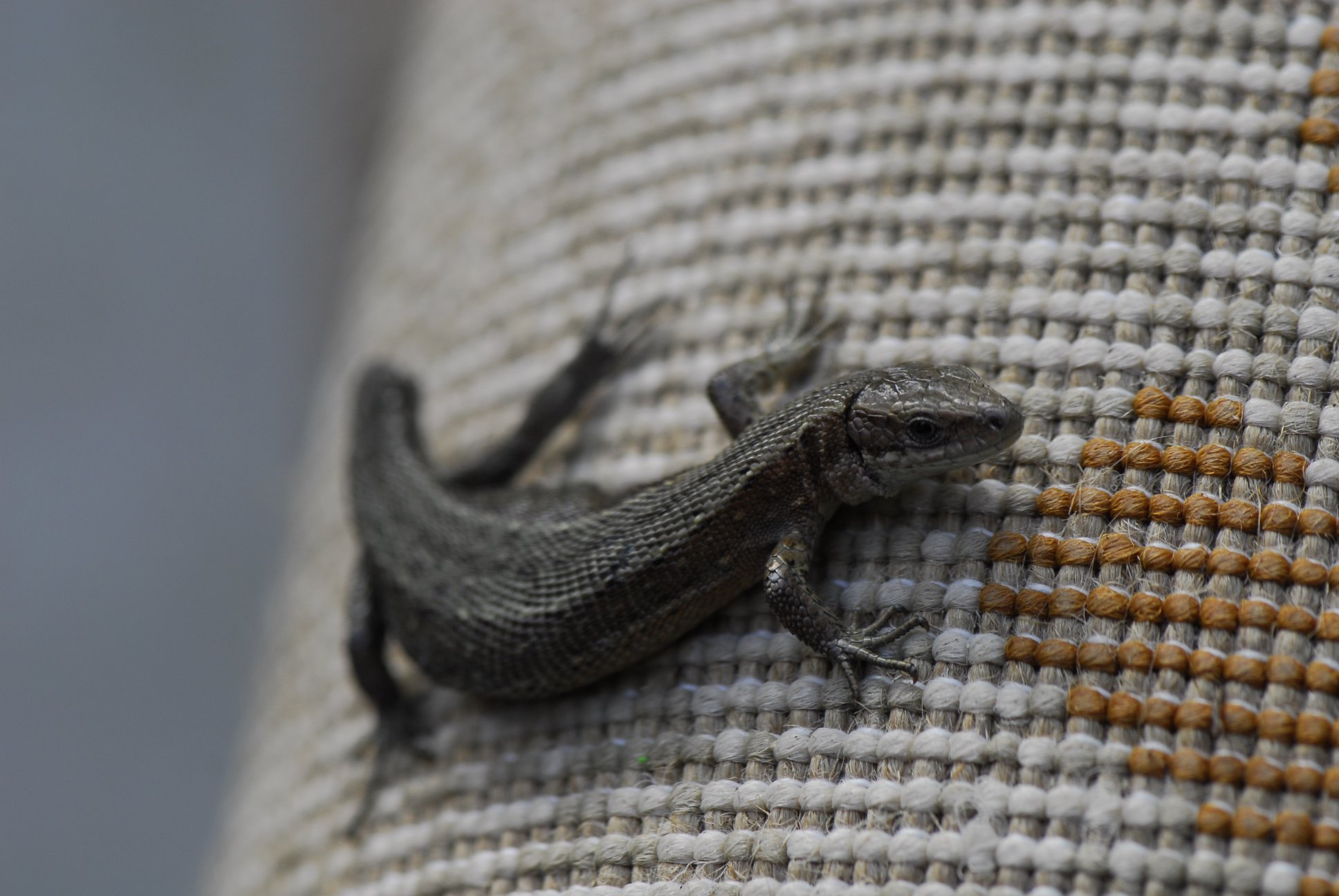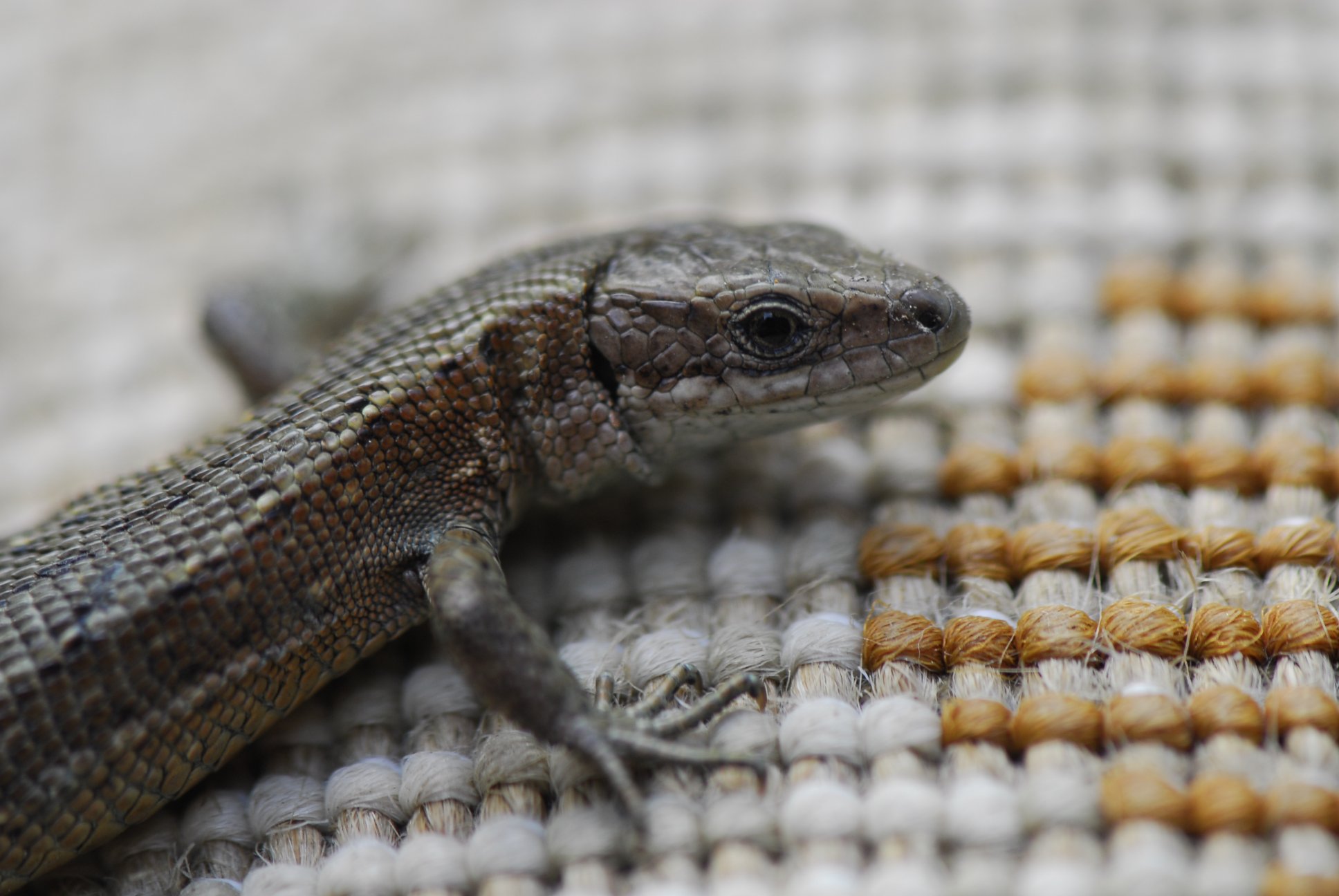The Common Lizard
Posted by Niall

Pictured above is a common lizard (Lacerata vivipara), Irelands only native reptile – one of a number of individuals spotted in the Ballycurren area of Headford by Nigel recently. The common lizard is seldom spotted but considered to be widespread in Ireland. The distribution and requirements of the species are currently being studied by the Irish wildlife trust. The male lizard can be identified by its brighter colours and black spots while the female is generally grey or greenish with fewer black spots. The little lizard enjoys nothing better than a nice bask in the sun and possibly piña colada’s. Common lizards hibernate during the winter and re-emerge in spring. Live offspring are produced in July and August. The Irish Wildlife Trust is currently carrying out a National Lizard Survey.

Of other lizards in Ireland the slow worm, although superficially like a snake, is actually a legless lizard (unlike snakes, they have eyelids) and is found in parts of the Burren – but is probably a recent introduction. Although there were almost certainly snakes in Ireland before the last glaciation, by the time the last Ice Age ended there was no existing landbridge. Even the shortest distance across the Irish sea is 12 miles between Kintyre and Antrim, barring the way for the post glacial reptiles (so St Patrick’s legend of driving snakes and reptiles out of Ireland doesn’t quite weigh up).
Sightings of the Common Lizard can be notified to the Irish Wildlife Trust by downloading the survey and information sheet online and emailing it to Lizards@iwt.ie
And just noticed that John Smyth has been spotting them too..
This entry was posted on Wednesday, June 11th, 2008 at 4:25 pm. It is filed under About Environment and tagged with environmental consultant galway, lizards, Saint Patrick, snakes.
You can follow any responses to this entry through the RSS 2.0 feed.





But what about the Common Trousersnake, heh? Who do I talk to about that?
Cute lizard! I miss the geckos that would cling to the screened windows in Texas. Sometimes we’d shine the light on the window so we could feed them.
Good luck with the fringe beer! How can I sign up to be a volunteer judge?
All are welcome to our fringe beer brewing – I think we might take your suggestion seriously and recruit additional members for a tasting panel – Maybe Beernut will volunteer. A nice cheese board too.. And some roast pig. Hmm..
just see one in the back garden,very nice put him back i hope there is alot more in the garden
Don’t forget to tell the Irish Wildlife trust…. see post.
i was wondering what they ate? beacause i see them around alot and was thinking about leaving out some food.
Lots of really good info at the following link:
http://www.noticenature.ie/files/enfo/factsheet/en/WL42%20Lizzards%20eng.pdf
They probably enjoy chasing live prey and would not appreciate another food source as much as you might like. The irish Wildlife Trust (www.iwt.ie) ran a survey last year and may be able to give you more information.
Its quite difficult to attract lizards with food in the same way as you can attract birds and mammals – they are pretty single minded, a bit dumb and like to keep on the move to avoid predators so no matter how many times you leave food out for them they won’t keep returning for your food. But, if you do want to leave out food, it should be invertebrates – since most bugs with legs and wings won’t hang about to be eaten, and lizards tend not to go for dead food, the best bet is to dig up mealworms from a flower bed or buy them from a bait shop, and leave them out on a tray. Other options are small slugs, ant larvae, and leatherjackets. I’ve been filming Lacerta species in Spain for the past fortnight using mealworms to entice them into camera shot, with good results.
Its quite difficult to attract lizards with food in the same way as you can attract birds and mammals – they are pretty single minded, a bit dumb and like to keep on the move to avoid predators so no matter how many times you leave food out for them they won’t keep returning for your food. But, if you do want to leave out food or try feeding them by hand, it should be invertebrates – since most bugs with legs and wings won’t hang about to be eaten, and lizards tend not to go for dead food, the best bet is to dig up mealworms from a flower bed or buy them from a bait shop, and leave them out on a tray. Other options are small slugs, ant larvae, and leatherjackets. I’ve filmed Lacerta species in Spain using mealworms to entice them into camera shot, with good results.
Wow, my wife is right. I really am a complete nerd.
Sorry, didn’t mean to send that comment twice. Moore folks – if you’re interested, I might send some footage of Spanish lizards for you to post?
i have found alot about lizards in the past few days as they are common in my area and can be caught with a net and alot of Patience. if you would be interested in what i have found out please e-mail me at tbwazere@hotmail.com
We found a common lizard in our garden, unfortunately the cat was in the middle of making a meal out of her. She’d dropped her tail, but she seems to be fine. We have her in a tank with leaves etc but she doesn’t seem to be eating. We put two spiders and two worms in with her but she only licked them. Is she just not hungry? =/
Hi JR. It might be best to find a nice sunny spot in a rocky area and release the lizard. It would probably survive better in it’s own habitat….
As Nigel points out above in his comment: Lots of really good info at the following link:
http://www.noticenature.ie/files/enfo/factsheet/en/WL42%20Lizzards%20eng.pdf
They probably enjoy chasing live prey and would not appreciate another food source as much as you might like. The irish Wildlife Trust (www.iwt.ie) ran a survey last year and may be able to give you more information.
Would the really bad weather over the past few weeks affect them? cos if they were hibernating under a rock or something with the minus temperatures we’ve been having, they could have found it hard
Hi SK – I’ll ask Ger (our environmental manager) to respond to your query tomorrow..
In the meantime, I found this online: http://www.ncbi.nlm.nih.gov/pubmed/11824405 so they do appear to have a substantial freeze tolerance (but I’m no expert).
Declan
Hi SK – the Met Eireann records have shown that the frost has penetrated to at least a depth of 50cm. It depends on how deep underground the lizard goes to hibernate. In limestone areas such as County Clare, where they are relatively common, it’s likely that they are deep enough in crevices or caves to survive the harsh conditions.
Thanks for reading
Ger
Ok thanks Declan and Ger,
was just wondering, either way they’d need t be hardy little buggers to get through that cold weve been having.
Thanks for the reply.
How can a snake take in an animal that’s larger sized than it truly is head?